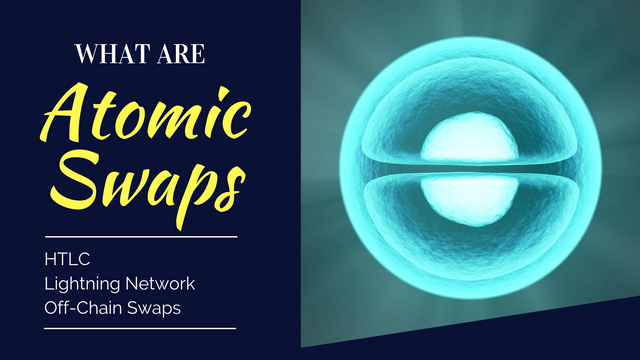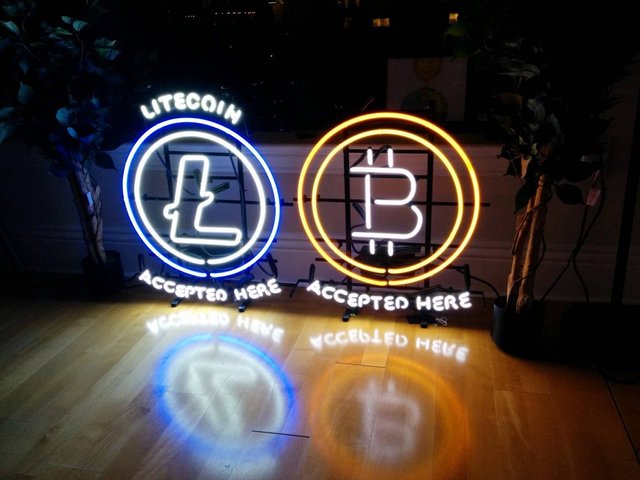
Atomic swaps enable the trading of one cryptocurrency for another between two parties, without using centralized intermediaries such as exchanges. This is enabled through smart contracts as the swaps takes place between different blockchains. This can be conducted off-chain and is away from the main blockchain. Atomic swap trades are completed instantly and securely between two trust-less parties while both parties still maintain complete control over their private keys.
Atomic Swaps utilize HTLCs (Hash Time-locked Contracts) to securely facilitate a peer-to-peer exchange. It requires a secret key that has to be solved before a specified time lapses, otherwise the contract falls through. Both parties essentially produce their own secret keys that they share with each other in order to finalize and validate the payment requirements.
Specifically, HTLCs require the recipient of the payment to generate a “receipt”, or a cryptographic proof that reflects that the payment has been received before the expiration time. If the recipient does not respond in the specified time given, the funds will go back to the sender.
Lightning Network & Off-Chain Swaps

Source: cream.technology
Here’s a scenario: Fred wants to send his Bitcoin to George in exchange for Litecoin. Assuming that Fred and George don’t know each other, they are in a trustless relationship and are essentially anonymous.
Fred and George perform an Atomic Swap, and they both receive their Bitcoin and Litecoin at an agreed price. Fred then submits this to the Bitcoin blockchain. If George accepts this payment, he will provide a proof of payment by entering his secret key and both payments will then be validated.
Off-chain atomic swaps happen off the main blockchain, on a secondary layer of nodes that are an extension of what is known as the Lightning Network. This happens directly between their wallets, as both parties receive their respective coins instantly and securely. Although the Lightning Network was specifically designed for Bitcoin, Altcoins that are forked from Bitcoin such as Zcash and Litecoin are able to also host their own lightning networks. Other projects like Ethereum and Ethereum Classic also have their own capabilities of hosting similar networks.
Projects Utilizing Atomic Swaps
Examples of cryptocurrencies and decentralized exchanges that are beginning to integrate Atomic Swaps:

Lightning Labs: Uses Bitcoin’s Lightning Network for transactions and has conducted off-chain swaps.

Altcoin.io: Building decentralized exchanges with wallets that support atomic swap features, they are preparing for their full platform launch after the current beta period.

Komodo: Building its own DEX with on-chain atomic swaps

Blocknet:Creating the internet of blockchains, allowing for greater liquidity by allow users to trade via BIP65 atomic swaps.

Republic Protocol: Open-source protocol powering open-source decentralized dark pools for cross-chain atomic trading of Ether, ERC20 tokens, and Bitcoin pairs.

Blockchain.io: A new hybrid cryptocurrency exchange that will offer a decentralised settlement feature with Atomic Swaps while offering the speed and performance of a centralized orderbook.
Limitations of Atomic Swaps
Some drawbacks from the use of Atomic Swaps include low latency and speed unless it is built on the Lightning Network, lack of support on major exchanges, and no current solution available for cryptocurrencies that do not support smart contracts.
Highlighting Blockchain.io’s Implementation of Atomic Swaps
Blockchain.io aims to alleviate these limitations by combining the efficiency of a low-latency full-featured centralized exchange with decentralized “trustless” cross-chain settlement. By leveraging the latest developments in cross-chain atomic swaps, cryptographic protocols, and payment networks such as Lightning and Raiden, this will help to overcome the scalability issues of decentralized blockchains.
This will also allow transactions across heterogeneous blockchains, increase the speed and lower the cost for these transactions, thus making them ready for mass adoption. The team is also heavily focused on research and development with the most prominent software developers from the cryptocurrency ecosystem. Among them include the teams at Lightning Network, Tumblebit, and Rootstock, who are constantly improving on-chain and off-chain cryptographic protocols to enable atomic swaps through HTLCs, payment channels, and side-chains.
Conclusion
Atomic swaps are an innovative cryptographic solution allowing for the transaction of cryptocurrencies between parties without requiring a third party intermediary. In its current state, atomic swaps are still very much in early development, however, as progress and advancements are made on the underlying technology, atomic swaps will help enable the possibilities and opportunities for greater forms of trustless trading and transaction of value.
Posted from my blog with SteemPress : https://cryptohype.tech/atomic-swaps/
By the way, Blockchain.io is a mentioned exchange that has a pretty interesting offering. It's a centralized exchange with decentralized settlement (which is the atomic swap feature in this case). You can choose which one to opt for and whether to give permission to use your private keys. Very interesting model!
Here's to the Blockchain Revolution!
Downvoting a post can decrease pending rewards and make it less visible. Common reasons:
Submit